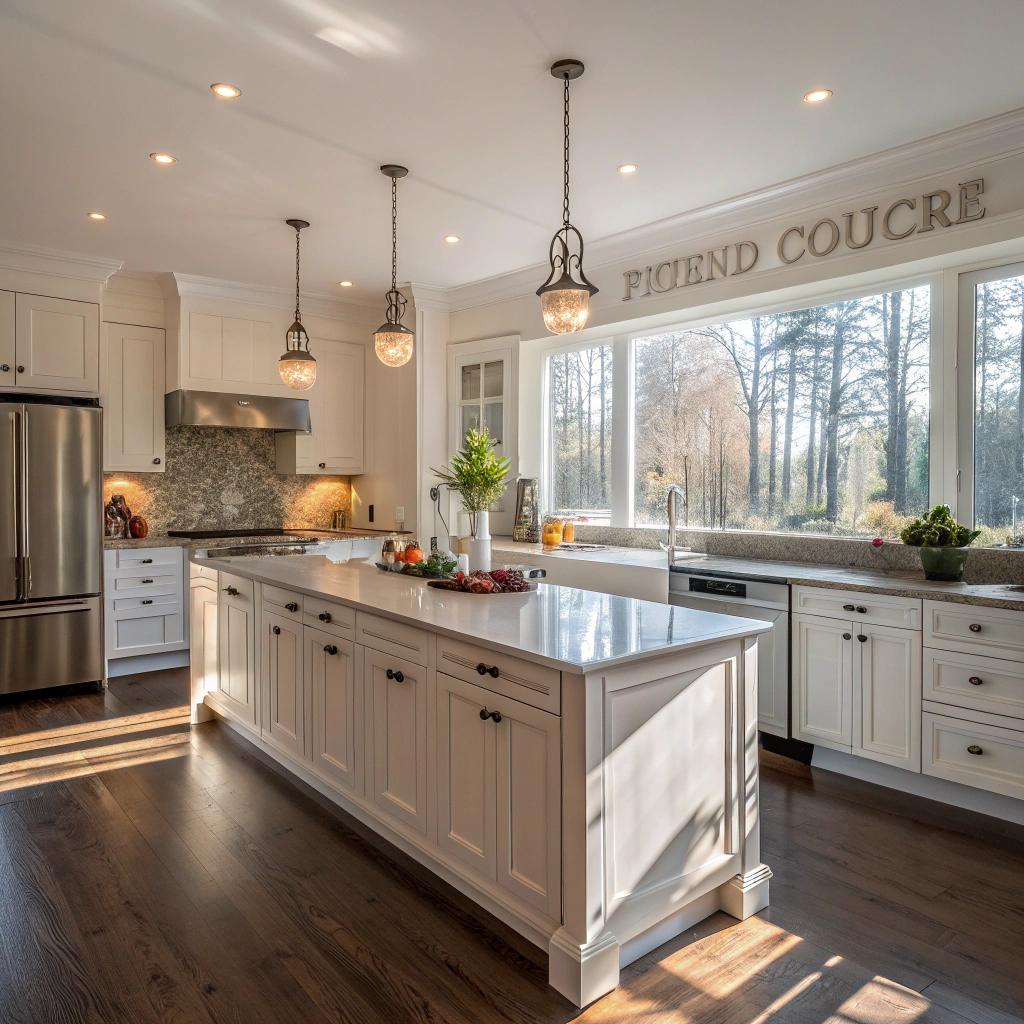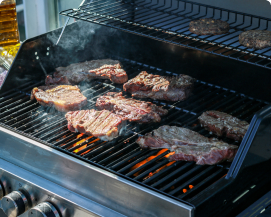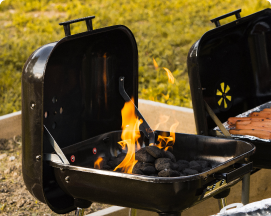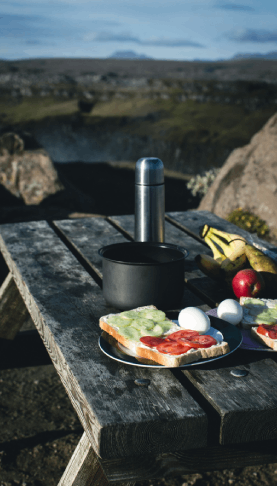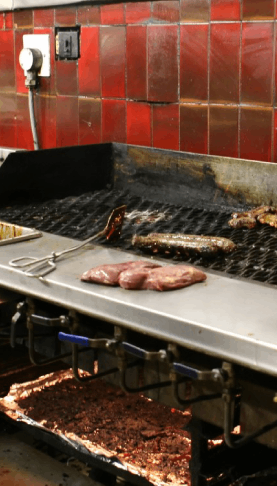If you cook a lot at home in Prince Edward County and you are wondering whether a kitchen renovation is worth it, the short answer is yes, as long as you plan it around how you actually cook, not just how the room will look in photos. A well planned kitchen can make prep faster, cleanup simpler, and hosting a little less stressful. A good place to start is talking with a local carpenter or contractor who understands cooking habits as well as local homes, such as a team that offers kitchen renovation Prince Edward County services, then working through your own needs from there.
Many kitchen projects focus on resale value or trends. For home cooks, that is only half the story. You care about where the compost bin goes, how far you walk from your stove to your fridge, how easy it is to wipe flour out of drawer corners.
I want to walk through this in a practical way, almost like planning a menu: start with your style of cooking, then move to layout, storage, surfaces, and finally the small details that quietly matter a lot.
How you cook in Prince Edward County should lead the design
Before thinking about tiles or faucet styles, think about what actually happens in your kitchen on a normal week.
Do you cook most nights? Do you bake bread? Do you host long dinners where people drink wine and stand in the kitchen for an hour before you even serve anything? Or do you mainly batch cook on Sundays and reheat during the week?
Your cooking patterns should decide the layout, not the other way around.
Here are a few common “home chef” types. You might see yourself in more than one, which is fine.
The weeknight cook who wants less chaos
This is the person who makes dinner 4 or 5 nights a week, maybe more, often after work. Time is tight, energy is limited.
If that sounds like you, a renovation that helps might focus on:
- Short walking distances between fridge, sink, and stove
- Pull out trash and recycling right beside the main prep area
- Good task lighting over counters so you can actually see what you are chopping
- Dish storage near the dishwasher so unloading is quick
- Deep drawers for pots instead of low cabinets that hurt your back
You might not need luxury features. You need a layout that turns a 45 minute dinner job into 30 minutes with less mess.
The weekend entertainer
If your kitchen tends to fill with friends and family, the needs change a bit. Cooking becomes a social thing.
Then the renovation often leans toward:
- An island or peninsula where guests can sit without blocking the stove
- A second prep zone with a small sink for salads or drinks
- Counter space for snacks, charcuterie boards, and dessert plates
- Storage for serving platters and larger bowls
- Lighting that is bright enough to see food, but can be dimmed later
A lot of people make a small mistake here. They think “open concept” solves everything. It can help, but an open kitchen that has no landing spots or no defined work zones can be more tiring than a smaller, well planned kitchen.
The baker and recipe tester
Bakers in Prince Edward County often make use of local flour, seasonal fruit, maybe even their own sourdough starters. The kitchen has to support that rhythm.
Some things that matter more for baking:
- Large, clear counter space where you can roll dough
- Storage for baking pans, cooling racks, mixing bowls, and tall containers of flour and sugar
- An outlet in the right place for a stand mixer that does not live on the dining table
- Stable temperatures near the oven, with good ventilation so the kitchen does not overheat
- A place to cool trays where kids or pets will not bump into them
So before you choose white cabinets or dark, ask yourself a simpler question: what do you cook in a normal month, and what frustrates you the most right now?
Making the layout work for how you move
In design magazines, you often see the “working triangle” between sink, stove, and fridge. That idea still helps, but real kitchens are a bit more messy than that.
Think instead about “stations”. Prep, cooking, cleaning, storage, coffee, baking. Each station needs what you use most for that task within one or two steps.
Common layout types for Prince Edward County homes
Homes in the County range from farmhouses to newer builds to cottage style places near the water. Each one tends to lean toward a certain layout.
| Layout type | Good for | Watch out for |
|---|---|---|
| Galley | Serious cooks who want everything close and efficient | Can feel tight if there are many people in the kitchen |
| L-shaped | Smaller homes where you still want a table or island | Corner storage can be awkward without smart cabinetry |
| U-shaped | Active cooks who want separate prep and cooking zones | Too many upper cabinets can make it feel crowded |
| Island with open plan | Entertaining, family hangouts, buffet style meals | Noise and cooking smells travel into nearby rooms |
There is no “best” layout for cooking. A good layout is one where you do not bump into people all the time, your most used tools are in reach, and there are no dead corners that collect junk.
If you often cook with a partner, leave at least two clear work zones so you are not standing on top of each other.
Try this small exercise before you commit to a layout: on a busy cooking day, maybe Sunday dinner, notice how many extra steps you take just because things are in the wrong place. Fridge on one side of the room, garbage on the other, cutting board in the third spot. Those steps add up during the year. Renovation is where you can fix that.
Storage that actually suits a home cook
Most kitchens do not fail because of the stove or the fridge. They fail because of storage. Bowls do not fit. Spices live three layers deep. Baking sheets slide behind the fridge somehow.
Thinking in categories, not just cabinet count
When you plan storage, it helps to think in categories. Cooking tools, prep tools, baking gear, serving pieces, pantry dry goods, snacks, drinks, and cleaning products. Each one needs a home.
Here are some ideas that tend to help home chefs in particular:
- Deep drawers near the stove for pots, pans, and lids
- A narrow pull out for spices beside the stove, but not right over the heat
- Vertical slots for sheet pans and cutting boards
- Toe kick drawers for infrequently used items like holiday platters
- Open shelves for everyday bowls and plates, if you are okay with some dusting
If you buy a lot from local farms and markets, think ahead about bulk storage. Where will the extra jars of preserves go? Do you need a full pantry cabinet, or even a small walk in pantry off the kitchen?
Fridge and pantry storage for fresh local food
Prince Edward County has many farm stands, wineries, and food producers. That is great, but it also means your storage needs can change through the year.
Think about:
- Extra fridge drawers or a second small fridge in the basement for drinks or preserving
- Shallow pantry shelves so jars do not get lost at the back
- Clear containers that fit your usual amounts of flour, rice, beans, and grains
- A place for preserving gear such as canning pots, jars, and lids
If your pantry is too deep, you will forget what you bought and waste food. Shallow, well lit shelves are almost always easier to live with.
Surfaces that can handle real cooking
Most home cooks in the County end up with stains, scorch marks, and knife scratches somewhere in the kitchen. That is normal. The goal is not to avoid all wear. It is to choose surfaces that wear in a way you can live with.
Countertops for chopping, rolling, and spilling
I will not pretend there is a perfect countertop. Each material brings trade offs, and people often disagree about what matters most. Still, this simple table might help.
| Material | Good points for home chefs | Things to keep in mind |
|---|---|---|
| Quartz | Hard, non porous, stains less from wine or beets | Can look a bit uniform if you like a natural look, sensitive to very high heat |
| Granite | Strong, handles hot pans reasonably well | Needs sealing, pattern can make crumbs harder to see |
| Butcher block | Warm look, gentle on knives, great for bread and dough | Needs oiling, can stain from water around the sink |
| Laminate | Budget friendly, easier to replace in the future | Can chip or burn, seams may be visible |
If you do a lot of pastry, a small slab of marble for rolling dough can help, even if the rest of the counter is another material. You do not need to marble the whole kitchen for that.
Floors that survive spills and long cooking sessions
Floor choice affects comfort more than people expect. Standing for two hours on very hard tile can be tiring.
Common options for County kitchens include:
- Tile, which is strong and water resistant but hard underfoot
- Vinyl plank, which is softer, easier on the budget, and better with dropped glasses
- Engineered wood, which looks nice but needs some care around water
Since winters are cold, some homeowners add in floor heat under tile, especially in older farmhouses with chilly floors. It can make early morning coffee much nicer, although it adds cost up front.
Lighting that helps you cook, not squint
Lighting is one area where I think many kitchen renovations fall short. You may have decent overhead lights, but if the counter stays in shadow, chopping herbs becomes annoying.
Layers of light for a working kitchen
A simple way to think about it:
- General lighting from ceiling fixtures or recessed lights
- Task lighting under cabinets aimed at the counter
- Accent or softer lighting over the island or table for evenings
As a home chef, task lighting matters most. LED strips or small puck lights under upper cabinets can make a big difference. You should be able to read a recipe or see if meat is seared properly without shadows from your own body blocking the light.
Try to place switches in logical spots. One by the main entrance, maybe another near the back door if your kitchen has one. And yes, dimmers on some circuits are nice. They let you drop the brightness after cleanup when people are just sitting around with dessert or a last glass of wine.
Appliances for real home cooking, not just show
A lot of talk about “chef kitchens” focuses on giant ranges, high end fridges, and specialty gadgets. Some of these help. Some become expensive decor.
Range and oven
In many Prince Edward County homes, there is a debate about gas vs electric vs induction. Each has supporters.
- Gas gives visible flame and fine control, but needs good ventilation and gas access
- Electric is common and simple, but responds more slowly to temperature changes
- Induction heats quickly and is easier to clean, but requires compatible pots
If you cook a lot of sauces or stir fries, fast heat response matters. If you bake more, a steady oven with even heat might matter more than the stove top type.
Fridge and freezer
Home chefs who shop at farmers markets need solid fridge and freezer space. Think about:
- Door clearance so you can open it fully without hitting islands or walls
- Freezer drawer vs full door, depending on how often you reach for frozen items
- Space for sheet pans if you chill pastry or store bulk baked goods
Some people like separate full height fridge and freezer units. Others find a standard French door fridge enough. Be realistic about how much you actually store at once. A fridge that is always packed tight does not cool well.
Dishwasher and prep sinks
Once you cook a lot, cleanup can be the hardest part. A quiet, reliable dishwasher becomes almost as important as the stove.
If you host large dinners, you might even think about two dishwashers or a large single one with flexible racks. In a smaller home, that may feel like too much. Again, this depends on your habits.
A second prep sink can help, especially if you have an island. It keeps raw meat or vegetable washing away from the main sink where people fill water glasses or rinse hands.
Local context: Prince Edward County homes and cooking life
Cooking in the County has its own rhythm. Summer is full of fresh produce, visitors, and long evenings. Winter is quieter, with soups, braises, and freezer meals. Your kitchen has to work in both seasons.
Seasonal swings in how you use the kitchen
In summer you might:
- Use the barbecue and outdoor dining more
- Wash more berries and vegetables from local farms
- Have guests staying over for weekends, meaning more breakfasts and coffee
In winter you might:
- Cook slow roasts and stews that run in the oven for hours
- Bake more bread and pastries
- Spend more time indoors, using the kitchen as a social spot
A smart renovation respects both patterns. That can mean good traffic flow to the deck or yard in summer, and cozy, well lit cooking space in winter.
Old houses, cottages, and surprises
Many houses in Prince Edward County are older or have been updated in stages. When you open walls, you might find old wiring, odd plumbing runs, or less insulation than you hoped.
This is where planning with a realistic budget helps. You cannot predict everything, but you can set aside a buffer for surprises. Try not to spend your full budget on finishes before you even see what is inside the walls. Structure and safety matter more than fancy hardware.
Budget choices for home chefs
Money shapes every renovation. You might want a pro style range, custom cabinets, and imported tile, but the budget says otherwise. That is normal. The question is where to spend more and where to save.
Where spending more tends to pay off for cooks
- Good quality drawers and hinges that feel solid and close softly
- Durable countertop in your heaviest prep area
- Vent hood that actually clears smoke and steam
- Lighting that reduces eye strain
- Plumbing and electrical work done properly to support appliances
Where you might save without hurting cooking life too much
- Standard cabinet sizes instead of full custom, if your room allows it
- Simpler backsplash tile laid in a clean pattern
- Open shelving instead of more upper cabinets in some spots
- Reuse of existing appliances if they work well and fit the new plan
Spend more on how the kitchen functions every single day, and less on things that only matter when you take a photo.
It is easy to get pulled into upgrades that look nice but do not change how you cook. A pot filler over the stove, for example, sounds helpful. Many people rarely use it. While a larger prep area or better light will change every meal you make.
Planning the workflow step by step
Thinking like a cook can guide almost every decision. Walk through a full meal in your head, from unloading groceries to wiping down the counter at the end.
Grocery unloading
You come in with bags. Where do you set them down? If the nearest counter is far from the fridge, that gets old fast.
- Plan a landing zone next to the fridge for groceries
- Place pantry storage within a few steps of this spot
Prep and cooking
Next, picture chopping vegetables, marinating meat, boiling pasta, and roasting something in the oven. Ask:
- Is there enough clear counter for prep without pushing items around constantly?
- Are knives, cutting boards, and mixing bowls near that prep area?
- Is the garbage or compost within one step for peels and packaging?
- Can you move hot pans from oven to a heat safe counter without crossing the room?
Serving and eating
Then think about serving. Are plates stored near where you plate food? Is there a spot to set out family style dishes or a buffet for guests?
Cleanup
Finally, picture scraping plates, loading the dishwasher, and dealing with leftovers.
- Is the dishwasher near the main sink and the dish storage?
- Is there a clear spot to pack leftovers into containers?
- Are everyday dishes in a cabinet that kids can reach without climbing?
This may sound obvious, but walking through these steps on paper before construction can catch problems early. You want the room to support the way you already cook, not force you into a different rhythm that you did not ask for.
Small details that matter more than they seem
Some parts of a kitchen renovation feel minor when you plan them, then you live with them every day. A few examples:
Trash, recycling, and compost
A pull out bin near the prep area keeps counters clear. In the County, many homes also sort recycling carefully. Mix of blue box, compost, and maybe soft plastics.
So plan enough volume. A single small bin under the sink may not cut it if you cook a lot from scratch and host often.
Outlets in the right spots
Stand mixer, food processor, blender, toaster, espresso machine, phone charger. These all need power, often at the same time.
- Add outlets along the backsplash at practical intervals
- Think about an outlet in the pantry for hidden appliances
- Consider USB or USB-C outlets near a small command center for recipes and notes
Ventilation and noise
If you ever sear steak or fry fish, you already know why a good range hood matters. Strong enough to pull steam and smells, not so loud that you hate using it.
Look at both the rated power and the noise level. A quiet, effective fan means you will actually run it when needed.
Working with trades and keeping the project on track
Even with a clear vision, a kitchen renovation involves carpenters, plumbers, electricians, and often local suppliers. Communication can make or break the experience.
Be honest about how you cook
Do not say “We cook a bit” if you cook every day and host once a week. Share the truth about your habits, even if it sounds fussy. Good tradespeople prefer that. They can suggest details you would not think to ask for.
You can even make a short list before you meet them:
- Number of meals cooked at home per week
- How often you bake
- How many people are in the kitchen at once on average
- Any physical needs, like bad knees or back that affect bending and reaching
This helps shape counter heights, storage choices, and layout decisions.
Respect the building, not just the plan
Every home has quirks. Older Prince Edward County houses may have sloped floors, odd window locations, or structural limits. Sometimes the Pinterest idea you liked simply will not fit without extreme cost.
That is where you have to pick your battles. Maybe the huge island does not fit well, but a more modest island and a better pantry solves the same problem. Design for how you live, not purely for a picture.
Frequently asked questions about cooking focused kitchen renovations
Q: Is a big island always a good idea for home chefs?
A: Not always. A big island helps with prep and serving, but only if you still have enough walking space around it. If it turns the room into a tight maze, a smaller island or a peninsula can actually work better. You want about a meter of clear space on each working side in most cases.
Q: Do I need professional grade appliances to cook serious food?
A: No. Many excellent home cooks use mid range appliances. What matters more is reliability, consistent heat, and a layout that supports your workflow. A solid standard range in a smart layout often beats a huge pro range squeezed into a bad layout.
Q: Are open shelves practical in a working kitchen?
A: They can be, but with limits. Open shelves are handy for items you use daily, like basic plates, bowls, and cups. Those do not have time to collect dust. For less used items, closed cabinets are easier to keep tidy. So a mix often works best.
Q: How much counter space does a home chef really need?
A: People have different comfort levels, but as a rough guide, aim for at least one continuous section of 4 to 6 feet for prep, plus smaller landing spots near the stove and fridge. If you bake a lot or host buffets, more is helpful. Layout matters as much as the raw number.
Q: Is it worth waiting and saving for the “perfect” kitchen?
A: I am slightly skeptical of the idea of a perfect kitchen. Needs change, families grow, tastes shift. It can make sense to phase work, fix major problems first, then upgrade finishes later when budget allows. As long as the room becomes safer, more functional, and nicer to cook in, it does not have to hit some ideal standard all at once.


